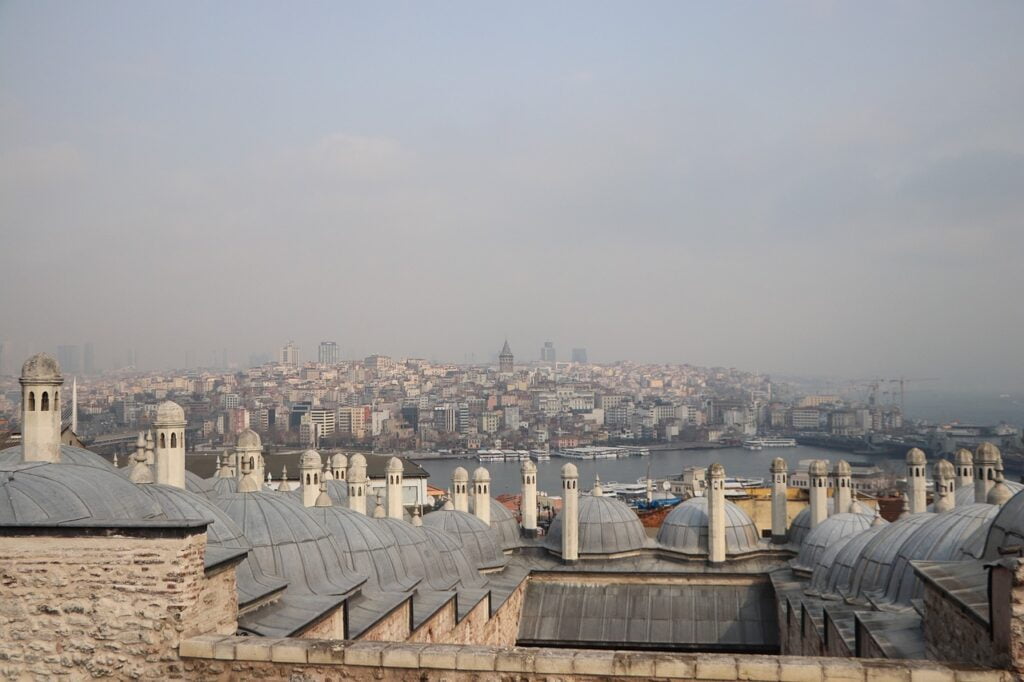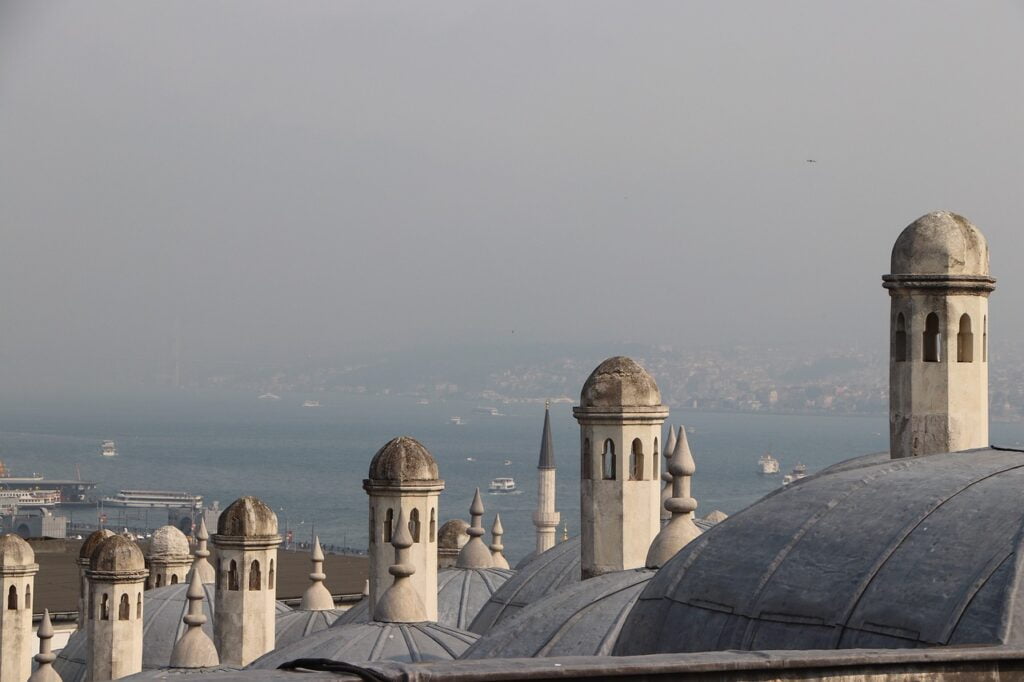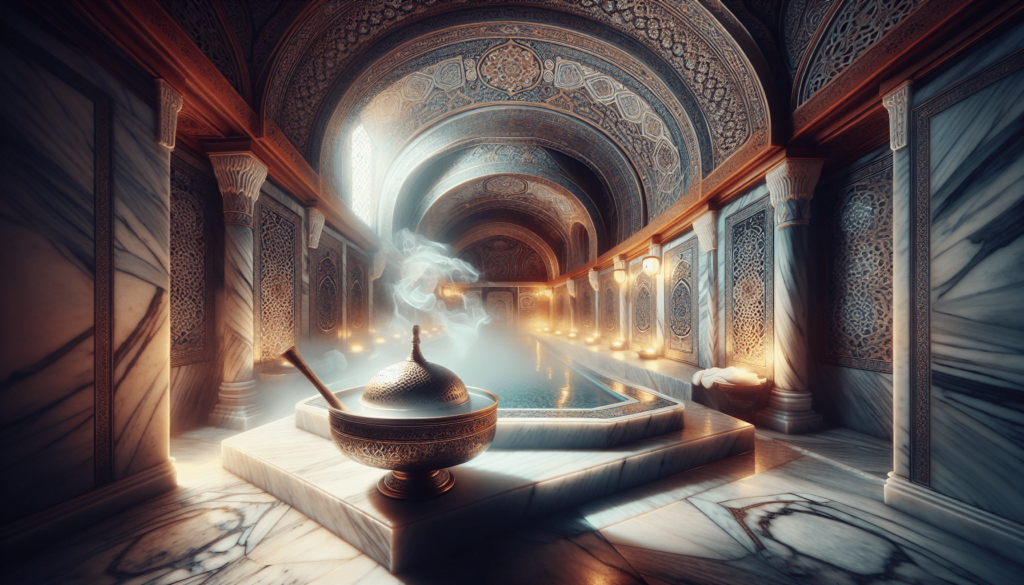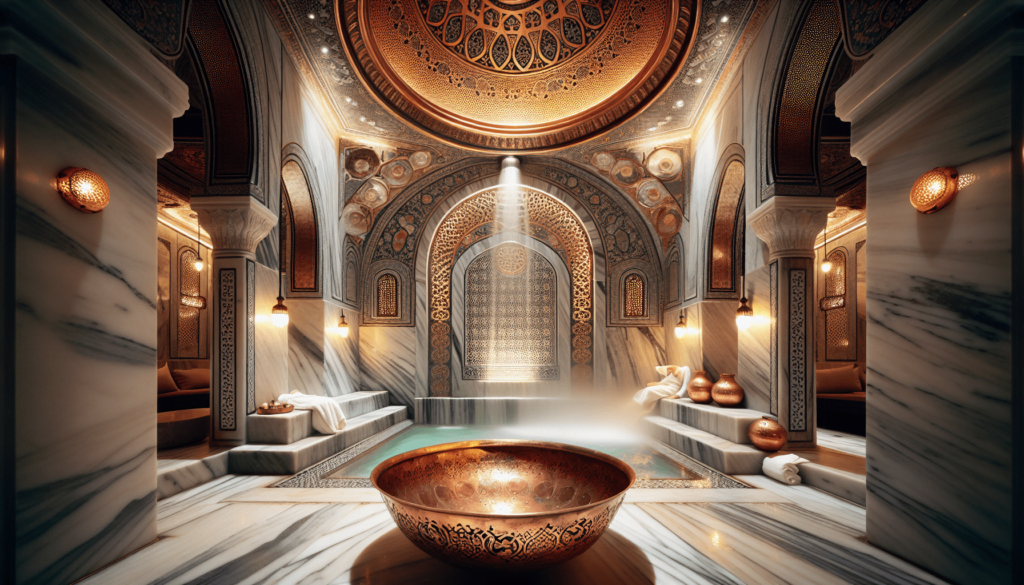The Ultimate Guide to Experiencing Traditional Turkish Baths in Istanbul” meticulously uncovers the rich history and contemporary relevance of this unique cultural practice. The article explores the origins and evolution of Turkish baths, known as hamams, tracing their roots back to the Roman and Byzantine eras before highlighting their significance in Ottoman culture. It delves into the intricacies of the bathing ritual, from the architectural grandeur of historic hamams like Çemberlitaş and Süleymaniye to the specific health benefits associated with different stages of the bathing process.
The guide also addresses modern trends, such as the resurgence of hamams as wellness destinations, merging tradition with contemporary spa culture. It provides practical advice for first-time visitors, offering a comprehensive overview of what to expect—from the etiquette to the unique experiences that await within these marble sanctuaries. The article ultimately presents Turkish baths not merely as a tourist attraction but as a vital cultural heritage, inviting readers to immerse themselves in an authentic and revitalizing piece of Istanbul’s history.
Have you ever wondered what it feels like to step into a centuries-old tradition and experience a piece of living history? Traditional Turkish baths, or hammams, offer just that opportunity. These baths are more than just places to cleanse the body; they provide a sensory immersion into Turkish culture and history.

This image is property of pixabay.com.
Table of Contents
Overview
Traditional Turkish baths, known as hammams, have been a significant part of Turkish culture for centuries. These baths offer visitors a unique blend of relaxation and cultural immersion, making them a must-visit for anyone exploring Istanbul. As one of the few experiences that allow travelers to feel genuinely connected to the country’s history, Turkish baths offer both physical rejuvenation and a deeper understanding of local traditions.
Historical Context
The concept of public bathing dates back to ancient Rome and Byzantium, but it was during the Ottoman Empire that the hammam as we know it today was perfected. These baths are inspired by Roman thermal baths and Byzantine traditions, but they incorporate unique Islamic architectural elements and social rituals. Each hammam was usually built near a mosque and considered an essential part of everyday life, reflecting the importance of cleanliness in Islam.
The Ultimate Guide to Experiencing Traditional Turkish Baths in Istanbul
Current Trends
In modern times, Turkish baths have become popular not only among locals but also tourists. With the increasing interest in wellness and holistic therapies, hammams have found a new audience. Many historic hammams in Istanbul have undergone renovation to cater to this growing trend, blending traditional techniques with modern conveniences. The rise of wellness tourism has only amplified the importance of these baths, making them a focal point for visitors seeking both relaxation and cultural enrichment.
Key Concepts and Definitions
Understanding a few key terms can greatly enhance the experience of a traditional Turkish bath:
- Hammam: A public bathhouse featuring a series of progressively warmer rooms intended for relaxation and cleansing.
- Kese: An exfoliating mitt made of coarse fabric, used to scrub the skin.
- Göbek Taşı: The “navel stone”; a large, heated marble platform in the center of the hammam where bathers lie to warm up and relax.
- Tellak: The attendant, traditionally male, who performs the scrubbing and washing rituals for men. For women, a female attendant called a “natır” is usually available.

This image is property of pixabay.com.
Detailed Exploration
The Structure of a Hammam
Traditional Turkish baths are built in a specific architectural style that aims to create a relaxing and purifying experience. Most hammams feature the following rooms:
- Camekan: The entrance and changing area, often elaborately decorated.
- Soğukluk: A cooler room where initial preparations take place.
- Sıcaklık: The main hot room with the central navel stone, where the primary steaming, scrubbing, and washing occur.
- Tepidarium: A moderately warm room for a gentle transition from cool to hot temperatures.
The Ritual
A visit to a traditional hammam typically follows a time-honored ritual that involves several stages:
- Warming Up: Visitors initially warm up by resting on the göbek taşı.
- Scrubbing: The tellak or natır performs an exfoliating scrub using a kese, removing dead skin cells and deep-cleansing the pores.
- Rinsing: After scrubbing, the body is rinsed thoroughly with warm water.
- Foam Massage: A luxurious foam massage ensues, using olive oil soap to create rich, foamy lather.
- Relaxation: Finally, visitors can relax with a cool drink in the camekan, transitioning back to the outside world at their own pace.
Example 1: Case Study of Çemberlitaş Hammamı
Located in the heart of Istanbul, Çemberlitaş Hammamı is one of the city’s most famous baths, built in 1584 by the architect Sinan. This historic bath offers a comprehensive understanding of the hammam experience. Visitors enter at the camekan, change into traditional peştamal (a type of thin, striped towel), and proceed through the sequence of bathing and relaxation. Over the centuries, it has hosted countless guests, each leaving with a unique memory of their visit.
Example 2: Case Study of Ayasofya Hürrem Sultan Hamam
Another iconic Turkish bath is the Ayasofya Hürrem Sultan Hamam, located between the Hagia Sophia and the Blue Mosque. Constructed in the 16th century, this hammam offers a blend of history and luxury. It underwent extensive restoration in 2008 and now provides a modern take on traditional practices. The intricate marble work and grandeur of the structure stand as a testament to Ottoman architecture and provide a rich historical backdrop to the bathing experience.
Comparison of Different Perspectives
The traditional Turkish bath experience can differ significantly based on various factors such as local customs, tourist expectations, and individual preferences. For instance, while some hammams focus on maintaining traditional practices, others have incorporated more spa-like elements to attract a broader audience.
Traditional vs. Modern Hammams
Traditional Hammams: Such establishments focus on preserving ancient rituals. They cater mainly to locals and retain features such as communal spaces and gender-segregated services.
Modern Hammams: These cater to the wellness tourism market, offering additional amenities like private rooms, luxury massages, and even beauty treatments. They often combine the traditional with the new, making the experience more comfortable for international visitors who may be unfamiliar with the rituals.

This image is property of pixabay.com.
Impact Assessment
Understanding the different perspectives on Turkish baths allows for a comprehensive analysis of their impact on both cultural preservation and modern wellness trends. Traditional hammams maintain the cultural heritage, offering a living history lesson. Meanwhile, modern hammams contribute to the tourism industry, making traditional practices accessible to a global audience without diluting their authenticity significantly.
Future Directions and Implications
Predictions
The future of Turkish baths in Istanbul seems promising, especially with the sustained interest in wellness tourism. It’s likely that more traditional hammams will continue modernizing, introducing hybrid models that blend historical practices with contemporary spa treatments. Additionally, technological innovations may introduce new ways to enhance the experience, such as improved hydrotherapy and aromatherapy techniques.
Implications
The modernization and increased popularity of Turkish baths have broader implications for Istanbul’s tourism and cultural sectors. By drawing tourists, these establishments contribute significantly to the local economy. Furthermore, they serve as custodians of centuries-old traditions, passing them on to future generations while making them relevant to contemporary society.

Conclusion
Recap
Istanbul’s traditional Turkish baths offer a compelling blend of history, culture, and relaxation. From their Roman and Byzantine origins to their Ottoman refinement, these baths have an enduring place in Turkish society. Today, they continue to evolve, adapting to modern trends while preserving their ancient rituals. This duality makes them not only a destination for physical cleansing and relaxation but also a unique window into Turkey’s rich cultural tapestry.
Final Thought
The next time you find yourself wandering through Istanbul, consider stepping into one of these historic baths. Allow yourself to be transported back in time, immersing in the warm embrace of steam and tradition. What stories will you carry with you from this timeless experience?
Engagement
Curious to learn more about the fascinating world of Turkish baths? Feel free to share your thoughts, experiences, or questions in the comments below. Your insights can enrich this ongoing conversation, sparking interest and knowledge for all who come across it.
Credible Sources
- Kinross, Lord. “The Ottoman Centuries: The Rise and Fall of the Turkish Empire.” William Morrow & Company.
- Goodwin, Godfrey. “A History of Ottoman Architecture.” Thames & Hudson.
- Sumner-Boyd, Hilary, and John Freely. “Strolling Through Istanbul: The Classic Guide to the City.” Tauris Parke Paperbacks.
- Ergin, Nina. “Bathing Culture of Anatolian Civilizations: Defining the Concepts and Practices.” Ege University Press.
- Websites and articles on Turkish tourism and historical places from renowned travel guides and online platforms.

TURKISH BATHS: THE ULTIMATE GUIDE TO VISITING
The Ultimate Guide to Exploring the Amazon Rainforest in Brazil
